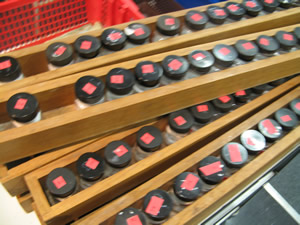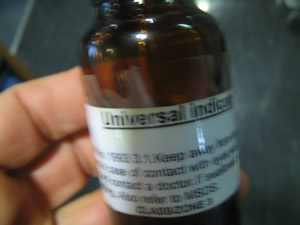Many compounds both harmless and deadly look identical. Often these substance take the form of white powders. It is up to the forensic chemist to analyse and identify such powders.
Below is an activity that will introduce you to the properties of some common household powders.

Start with corn starch and its reaction with iodine, then progress onto, sugar, citric acid, baking powder and salt.



Universal indicator can also tell you something about the chemical nature of the powder. The green indicator will change colour according to the chemical nature of the powder.
Blue indicates that the powder is a base. Red indicates that it is an acid.

| Powder | Reaction with iodine | Reaction with vinegar | Reaction with baking soda water | Reaction to heat | Dissolves in water | Colour change with Universal indicator |
| Corn starch | ||||||
| Alum crystals | ||||||
| Ground sugar | ||||||
| Citric acid powder | ||||||
| Baking soda | ||||||
| Salt (sodium chloride) |
You are now provided with a mixture of unknown powders. Identify the powders in the mixture. Draw up your own table to record observations of the tests you conduct.
Salt is hard to identify. Use your knowledge of precipitates to suggest one possible way of identifying salt in a mixture of salt and baking powder.